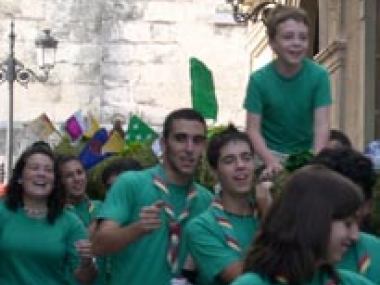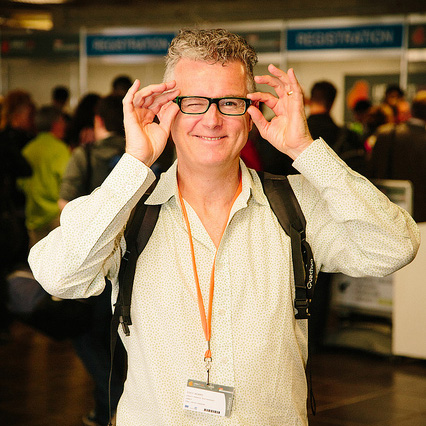What messages do the URBACT Workstreams have for promoting inclusive cities?
Edited on
28 October 2019How does URBACT capitalise the key messages coming from its work with over 500 cities across Europe? The short answer is, in various ways, including through the programme’s workstream activity.
A few weeks ago URBACT published its second set of workstream outputs. The result of an extensive process involving a wide range of stakeholders, the workstreams distil key messages emerging from cities’ work throughout the E.U. These key programme outputs provide a snapshot of how Europe’s cities are tackling our biggest challenges. As such, they provide a valuable resource for the programme’s audience, including policy makers, city managers and urban practitioners.
Each of the four workstreams explored a priority issue affecting Europe’s cities today. The themes were:
- New Urban Economies
- Job Generation for a jobless generation
- Sustainable Regeneration in urban areas
- Social Innovation in Cities
URBACT is in the business of integrated sustainable urban development. Consequently, the outputs of the work were packaged as a series of cross-cutting reports, highlighting the links between these themes.
All four reports have important messages relating to social inclusion. In this article, we will explore these and examine their implications for urban practitioners in the field.

New Urban Economies
The New Urban Economies workstream succinctly covers a diverse and wide-ranging agenda. Within this, three important messages relating to inclusion emerge.
The New Economy is a short-hand term for a wide range of economic activity. Within it are the emerging sectors (including digital developments and low-carbon related activity), established sectors which are being modernised (such as Health and Care) and the Collaborative Economy, itself a broad concept ranging from Uber and AirbandB to community-based activities.
Technology is a factor in each of these three sub-sectors and has traditionally been associated with the loss of entry-level jobs. This trend has included the displacement of retail sector jobs by on-line shopping and the challenge to the tourism and taxi industries posed by businesses like Uber and AirBnB, potentially contributing to wider city inequalities.
Within the workstream report, the two city case studies confirm this hi-tech high-skill marriage. In San Sebastian, the Surf Cluster case study includes high-level R and D, specialist manufacturing and promotion of a niche tourism market. The city’s surf cluster is unlikely to generate a high volume of jobs for those with entry-level skills. Rather, it is a boutique industry that is more likely to create a modest number of specialist employment opportunities. These high-value added niche sectors are important for Europe’s economy, but they won’t in themselves solve the job crisis.

Dublin’s example of a city driving economic growth through the use of Open data also offers limited opportunities for those with lower level skills. Such initiatives – increasingly commonplace across Europe – are likely to lead to significant efficiencies in sectors like transport. By promoting efficiency, they are likely to yield economic, environmental and, potentially, health benefits. Open data is also creating opportunities for new business development – for example in the apps sector. However, these are creating jobs in modest numbers principally for those with high qualification levels.
The triple-helix concept – involving the public, commercial and higher education sectors – is at the heart of both the Dublin and San Sebastian case studies. But, as the New Economies report shows, this does not always have to overlook the important issue of inclusion and job creation at all levels. The report cites the example of the Toulouse Oncopole, a €1b health cluster investment in southern France. This includes a hospital and cancer research centres, developed as part of a wider regeneration initiative. This included the ‘neighbourhood growth booster’ designed to create pathways into employment for local residents. However, the impact of the Crisis has hindered progress and there is limited evidence of results.
The potential of the Collaborative Economy to promote social cohesion
As the subject of protests and legislative activity in many cities, the Sharing Economy is perhaps the most controversial aspect of the ‘New Economy’. This workstream examines the phenomenon and asks about its contribution to more cohesive cities in Europe. This reflects a more detailed examination by the same author, Emma Clarence, in another of our articles.
Overall, the jury remains out on this key question. Under what is a broad definition, there are key distinctions within the sharing economy concept. On the one hand, it includes community-driven activities where the emphasis is on sharing and collaborative activity – such as Social Street which began in Bologna – driven by principles of social connection and solidarity. On the other, businesses like AirBnB and Uber enable those with underutilized assets to monetize them. In doing so, they are likely to impact on the employment levels within industry sectors like tourism which have high proportions of low-wage, low-skill jobs in cities.
Again, technology is the enabler here, with digital platforms the key to connecting those with latent assets with a market looking to use them. In terms of key messages, all of the evidence suggests that the technological pace of change will only increase. On the evidence of this work, access to education remains the ladder out of poverty without there is clearly a growing risk of wider inequalities in our cities as this industrial revolution gathers pace.
Job Generation for a Jobless Generation
High levels of youth unemployment remain a major structural problem in most parts of Europe. The latest data shows that almost 5 million young people are unemployed whilst the number of NEETs (young people not in employment, education or training) is 7.5million – one in eight of all young people. The economic and social impact of these figures is significant for Europe’s cities.
This workstream adopts a practical approach to this challenge. In doing so it provides useful real-time content for urban decision-makers looking to improve youth employment prospects.
Through a CEDEFOP contribution, it forecasts the future profile of Europe’s jobs. This endorses the New Economy conclusions about the rise of high skilled positions. In 2025, around 44% of employed people will be in a highly-skilled job, compared to 36.5% in 2000. Over the same period, demand for elementary positions will also grow, though on a smaller scale, from 9.8% to 11.2%. Around 45% will be mid-skill level, and most vacancies will be created by replacement demand (as older people retire) than through new jobs.
An insightful interview with a senior HR executive at Airbus, confirms that education remains the key to connecting people of all ages – but particularly the young – with employment opportunities. He speaks about the gaps between available job openings and the skills most education systems provide. This input includes examples from Spain where employers have collaborated with higher education to customise the learning offer. He also underlines that attitude is as important as qualifications, a message that also emerges strongly from the URBACT My Generation at Work project.
The workstream points to Germany, where the youth unemployment rate is 7.2%, and its dual system as an exemplary model. However, the implication is not to replicate the model per se, but its core principles – an effective structured partnership between employers and the education system.
It is important to have examples of where cities are making progress. This report includes a number of them. One is Rotterdam, where the airport offers opportunities to young people with basic-level qualifications. Another is Edinburgh, with its
 guarantee of an opportunity for all school leavers and Nantes with its ambassador programme for young people from deprived neighbourhoods. Leeds, one of the case study cities, underlines the importance of good labour market intelligence and guidance support to help young people make the post-school transition smoothly.
guarantee of an opportunity for all school leavers and Nantes with its ambassador programme for young people from deprived neighbourhoods. Leeds, one of the case study cities, underlines the importance of good labour market intelligence and guidance support to help young people make the post-school transition smoothly.
Finally, the report underlines the importance of youth entrepreneurship through its Thessaloniki case study, particularly in an environment where the established labour market is in turmoil.
The workstream output makes an obvious but important point about the need for the right jobs in the right places. The report has two principal messages for cities looking to address this. The first relates to creating a better understanding of the problem and the second to engaging employers. Reading this will help city stakeholders do both.
Thessaloniki European Youth Capital Festival image by Eleni Vraka
Sustainable Regeneration in Urban Areas
Managing the impact of climate change is the biggest challenge we face. This workstream reminds us that environmental changes disproportionately affect society’s most vulnerable people. Overcrowding, noise and poor air quality are familiar challenges in our cities, and in recent summers, older people have been the most affected by extreme heat caused by climate changes.
In considering the options open to cities, this report underlines the frequent tension between technical and managerial solutions and the priorities of local communities. One of the case studies, Hamburg, provides an interesting insight into the interface between the two. The focus is on the city’s IBA (International Building Exhibition), part of the city’s 2011 Green Capital of Europe programme.

Located in Wilhelmsburg, a deprived former industrial neighbourhood, one of the IBA’s aims was to kick-start the local regeneration process, in order to address the city’s housing needs, with an emphasis on sustainability.Since the early 2000s, the neighbourhood has had an active and mobilised community – formed in response to proposed development plans and poor local conditions, and the case study articulates how these two distinct approaches have combined – with some success.
Housing is also at the centre of the other workstream case study, focused on Vilnius. A significant proportion of the city’s residents still lives in large Soviet-era housing blocks. Many of these are now in poor condition, but environmental improvements are made difficult by the mixed ownership model of the estates, an issue Vilnius addressed through the URBACT Re-Block project. This helped provide a methodology and tools to encourage multi-stakeholder collaboration, one of the keys to finding a sustainable solution to this challenge.
Hamburg IBA image by Kenneth Sorenson
From this work the important role of housing in addressing many of Europe’s challenges is clear. In an interview, Soracha Edwards, Housing Europe Chief Executive, stresses that housing cannot be dealt with through a silo approach. It must form part of the kind of integrated model URBACT champions. This is a major challenge, but Soracha points to cities like Malmo who, through their ‘Regeneration Dialogue’ are connecting the debate around affordable housing and environmental sustainability.
From an inclusion perspective, the final word from this workstream goes to Manuel Humburg, long time resident and activist in Hamburg’s Wilhelmsburg district:
Sometimes saying ‘No’ and showing resistance is the best way of ‘participation
Social Innovation in Cities
Across Europe, public budgets are under pressure. This is a particular challenge in cities where the cost of meeting social needs is rising. At the same time, citizens have higher expectations of services, due to technology and other changes. The consequent challenge for city authorities is summarised in this workstream report by Fleur Imming, Amersfoort Alderman who notes that:
Society is changing fast, and the city government should change to reconnect with it
The Amersfoort change experience, showcased in this workstream, shows how the administration there has done this. Under the mantra of ‘letting go’ the local authority has delegated responsibility for a number of key projects to groups of citizens, with very positive results. This journey, triggered by declining resources, has led to a new partnership with citizens and a rekindling of trust between government and people.
We would be right to assume that this is easier to achieve in Amersfoort than most places. As a medium-sized city (100,000 population) with relatively well-off and highly educated citizens, this is not one of Europe’s most deprived corners. However, they have taken steps to ensure that it is not only the ‘usual suspects’ whose voices are heard. Following the G1000 principles, they have used a lot-based mechanism to randomly appoint a group of citizens to drive people-powered decision-making.
And these new developments are not confined to Western Europe. The workstream’s other case study, Gdansk, provides an insight into how co-operative processes are being employed to involve citizens in the urban change process. The workstream notes that in relatively new democratic societies – like Poland and South Korea – enlightened city leadership has a key role to play here.

From Italy, there is an example of a city administration that is focusing efforts to stimulate social innovation in one of the most deprived districts. In Milan, the Quarto Oggiaro neighbourhood has become a lab space for a range of linked interventions which have generated a number of locally-based social enterprises. These include the Quarto Food Club, providing meals for older people in the neighbourhood, and Quarto Gardening, offering youth employment opportunities.
The interview with Stéphane Vincent of La 27e Région, provides an example of social innovation methodologies utilised by a community of interest. The innovation lab run by the local authority of Val d’Oise (Cergy, France) involved disabled people, civil servants and other stakeholders in redesigning support services with very positive results.
The workstream includes important pointers for local administrations from Anne de Feijter in Amersfoort. Anne has ben instrumental in sharing their model and catalysing the concept of the ‘free-range civil servant’ at large in the community, working alongside citizens. One important message Anne passes on is “Go where the energy is” which is good advice, as municipalities find they can no longer do everything.
Conclusions
The four reports represent a major contribution to our thinking – and future doing – in cities. It is helpful that the messages relating to inclusion are embedded within the outputs, rather than having a stand-alone publication with this focus. The way forward is through an integrated approach, which combines the economic, environmental and social perspective.
In this short article, there has only been space to summarise the headlines as they relate to the inclusion theme. I hope that this taster, has given you sufficient appetite to read the reports in their entirety.
 Submitted by Eddy Adams on
Submitted by Eddy Adams on




